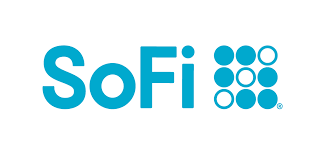Want to Stop Wasting Money? It Starts in the Kitchen
A change to your eating habits could make you healthier, both physically and financially.
One of the best ways to build your savings and improve your financial situation is to cut down on wasteful spending. Want to get your spending in check? Our research shows that your eating habits are a good place to start.
While there are all sorts of ways that consumers waste money, a surprising number of them can be traced to your food choices. Fortunately, you don't need to go hungry to save money on what you eat.
The most common food-related wastes of money
In our wasteful spending habits survey, we polled respondents to discover the most common ways that Americans waste money. Although there were a range of responses, a whopping four of the top five were related to food or drinks.
Here's the percentage of respondents who said they frequently engaged in the top five types of wasteful spending:
- Throwing out leftovers or expired food: 70%
- Frequenting fast-food places: 54%
- Buying overpriced beverages: 50%
- Impulse buying: 42%
- Frequenting dine-in restaurants: 41%
Impulse buying is the only response unrelated to food or beverages. It's clear from the data that many consumers waste money on food. And it's not something that happens once in a blue moon, either. Consumers engage in these behaviors frequently.
Why do people waste so much money on food?
There are two main reasons that people waste money on food: Poor planning and convenience.
The most common waste of money, throwing out leftovers or expired food, is often due to poor planning. You might make more food than you'll be able to eat before it goes bad. Or buy ingredients that you don't end up using.
To be fair, everybody needs to throw out food from time to time. Sometimes we forget about that food buried at the back of our refrigerator... or get a package of chicken that starts smelling bad three days before the expiration date (and curse the grocery store that sold it to us). But if you're tossing things on a regular basis, you need to plan ahead more.
Convenience is a huge cause of unnecessary food expenses, too. When you're busy, it's tempting to stop at fast-food places or dine-in restaurants. You save time and don't need to worry about making something yourself.
Again, the occasional trip to one of these restaurants isn't a big deal. But don't overdo it. Eating out tends to be more expensive on a per-meal basis than preparing your own meals (and you may also make unhealthy food choices).
How to cut down on wasteful food expenses
Food is one of the easiest places where you can reduce your spending. Here are a few simple ways to do this:
- Plan your meals: You'll only buy ingredients that you need instead of getting a bunch of items you may not use. Do you often find yourself without time to cook? Prepare your meals in advance to save time during the week.
- Make a list before you go grocery shopping: Once you have your meal plan, put together a shopping list and stick to it.
- Don't buy more than you need just because it's on sale: It's tempting to buy extra food when you'll get a lower per-unit price, but you won't save money if you end up throwing more out.
- Use your freezer: Not sure if you'll use food before it expires? Instead of waiting until the last minute and risking it going bad, just freeze it.
- Set a strict food budget: It's easy to overspend on food when you haven't put a limit on your monthly food expenses. Make sure you have a food budget and monitor your costs. You could also use one bank account specifically for food so you're always on top of how much you're spending.
If you often eat out because you don't like cooking, search online for recipes that use ingredients you enjoy. Plenty of dishes don't require you to be a master chef and knowing how to prepare a couple staples helps you avoid the temptation to stop for fast food or order delivery.
Trim the fat from your food bill
After a home payment, food is one of the biggest expenses that consumers have, and too much wasteful spending can make those food costs shoot up. By making some simple adjustments to your eating habits, you could find it a lot easier to boost your savings.
These savings accounts are FDIC insured and could earn you 11x your bank
Many people are missing out on guaranteed returns as their money languishes in a big bank savings account earning next to no interest. Our picks of the best online savings accounts could earn you 11x the national average savings account rate. Click here to uncover the best-in-class accounts that landed a spot on our short list of the best savings accounts for 2024.
Our Research Expert
We're firm believers in the Golden Rule, which is why editorial opinions are ours alone and have not been previously reviewed, approved, or endorsed by included advertisers. The Ascent does not cover all offers on the market. Editorial content from The Ascent is separate from The Motley Fool editorial content and is created by a different analyst team.
Related Articles
View All Articles
